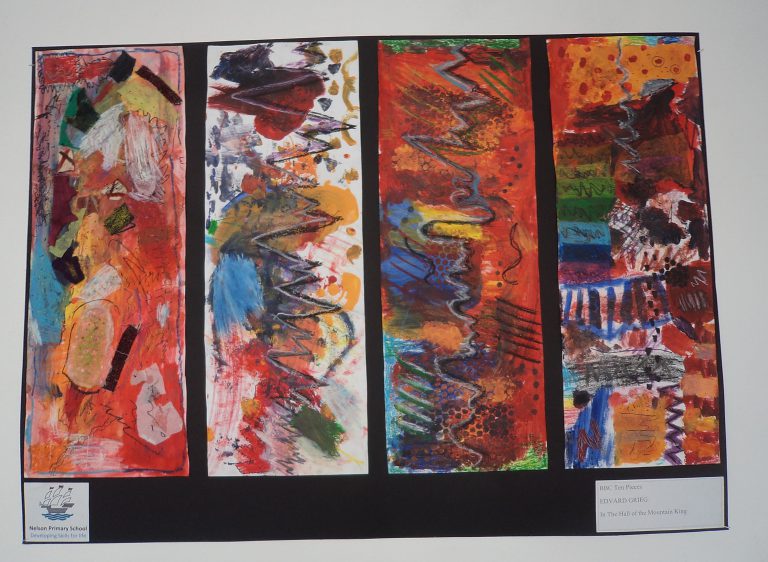
Nelson-Primary School
These paintings were one of the outcomes of Nelson Primary Schools participation in the BBC’s Ten Pieces project. The aim of the project was to open up the world of classical music to young people. The children were encouraged to explore creative responses to various pieces of music. These painting were produced in response to EDVARD GRIEG’s ‘In The Hall of the Mountain King’
School 21
How can chess be used to explain the key figures involved in the Cold War?
What was the project brief?
In this project, students worked towards producing a large chess board that included key political and/or military figures from the Cold War sculpted in clay and painted. Initially, each student was assigned two figures to research and then assess their significance within the Cold War and impact on the relationship between the USSR and America/Nato Allies. They used their judgement to link their figure to a chess piece that signified their status i.e. A King, Queen, Rook, etc. In a series of Harkness debates, students had to discuss their figure’s significance in relation to each other.

What were the students assessed on?
Throughout the project, students were assessed on their general historical understanding of the Cold War through a series of tests and final examination. Just before the exhibition opening, students had a 10-minute presentation and interview with their teacher and a visitor to explain about their final product. Students were assessed overall on a combination of their art and historical knowledge/skills combined with generic project skills that includes their ability to be organised and meet deadlines, critique their own work and the work of others and present showing oracy skills.
What did you learn from this project?
I was very pleased with the outcome as I think there was enough challenge in the making and improvements in the redrafting of the product. I was very clear that the students’ role was that of a model maker/sculptor commissioned by myself who developed the concept of the chessboard as a metaphor for the Cold War. Previously, I would have deemed this as a less authentic project as the students hadn’t developed the entire project from scratch. However, I now think that each project should be developed to build up skills that are personalised to the particular cohort. In this case, our Year 9s had had many opportunities to take creative control of all aspects of their work, yet I believed they needed to refocus on the craftsmanship and gain a better material understanding of clay/learning to sculpt. I also enjoyed making the chessboard as it reignited my interest in carpentry and inspired me to design more woodwork projects for the students.
What were the outcomes?
· Two caricature illustrations of two political/military figures
· Two sculpted busts/chess pieces made out of clay and painted with acrylics
· A biography and rationale about the figures in terms of their significance in the Cold War


